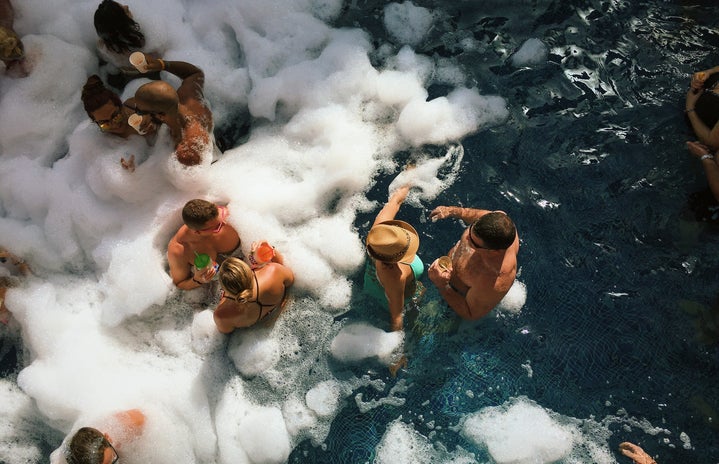Palermo, the capital of Sicily, brims with a rustic charm as a historic and lively city located in the middle of the Mediterranean. It charm is conjured by a romantically dishevelled atmosphere, and it’s a city brimming with unique churches, interesting art and incomparable cuisine. Sicily’s placement at the ‘crossroads’ of the Mediterranean ensures that a cocktail of cultures are represented in the city – with Norman, Byzantine and Arabian influence evident.
Friday afternoon
First things first, orientate your way around the city and enjoy wondering around. The city is effectively divided into the modern end – complete with high-end shops – and the historic centre. Be sure to check out the ‘four corners’ crossroad, which is guarded by the various guardians and monarchs of the city; it’s a pivotal orientation spot. Beside the ‘four corners’ crossroad is the pretty Fontana Pretoria, which is surrounded by the churches of Santa Caterina and San Giuseppe dei Teatini. Dip and dive into any churches that take your fancy.
A view from the ‘Four Corners’
Fontana Pretoria
Saturday morning
Palermo buzzes at the weekends, the city is packed and feels alive. Women lazily stare at the world from their balconies, or chat with neighbours while hanging out laundry that adorns every other balcony in every street; this creates a home-like atmosphere to the city. Check out the Palazzo dei Normanni and the Cappella Palatina (the Norman Palace and the Palatine chapel within it). The Palace is intriguing due to its perpetual evolutions – from a Norman palace to the current regional parliament of Sicily. The Palatine chapel is spectacular with its unique Arab-Norman-Byzantine style and ornate golden interior.
Next admire the nearby Palermo Cathedral. Whilst the interior is not as interesting as the magnificent exterior architecture (and not really worth the money to enter the crypt or the treasury), it is worth paying a visit to the roof for awe-inducing views of the city. Also skip the neighbouring museum. Having worked up an appetite by spiral stone staircase on a march for panoramic views of Palermo, go to the Primi Piatti restaurant for delicious but reasonably priced Sicilian food. It serves mouth-watering pizza, pasta and wine. It is located on the Vicolo San Giuseppe, a street just off the Via Vittorio Emanuele (one of the streets that feeds into the all-important four corners).
Interior of the Palatine Chapel
Palermo Cathedral
Saturday afternoon
After a morning of hard-hitting sightseeing, enjoy a more relaxed afternoon. Go for a gentle stroll soaking up the sun around the harbour, eyeing up your favourite boat, or even have a go at kayaking. If the sweltering sun is becoming overbearing, enjoy the shade of the adjacent botanical gardens. It’s filled with some of the most enormous and ‘funky’ looking trees that seem more suitable in Amazonian rainforest rather than on a little island in the middle of the Mediterranean. Intersperse these activities with plenty of time to ‘hangout’ in coffee shops – enjoy Italian coffee and a variety of delectable pastries and cakes including the famous ‘cannoli’ (if you want a few, which I recommend) or ‘connolo’ if you just want one.
The Harbour
Treats from a cafe in the centre of Palermo
Sunday morning
Sunday just as bustling, as pedestrians take over the street, residents head to church and families reunite over the kitchen table. Head over to the vibrant bohemian district of Ballarò for a market not only of kitsch, but also an amazing variety of fresh Italian produce. The fresh mozzarella, in particular, is incredible. Actually, all the food is incredible. In this area is located the Chiesa del Gesù which has a beautiful baroque interior and a rainbow-like colour scheme. The majority of the building is actually very modern – excluding the altar area – after it’s reconstruction as a consequence of its obliteration in 1943 in the midst of World War II.
Interior of the Chiesa del Gesù
Sunday afternoon
Enjoy more caffeine and cannoli pit-stops in the plethora of cafes. Partake in a spot of shopping in the more modern part of town, or souvenir shopping in the older parts of the city. Take a break (with ice-cream, obviously) to enjoy the magnificent building of the ‘Teatro Massimo’, the biggest opera house in Italy, and the third largest in Europe. You can also enjoy guided tours in English for 8 euros (or 5 if you are under 25 or over 65 years old). Continuing with your shopping, also stop by the department store located adjacent to the church of San Domenico. Head to the roof for an incredible panoramic vista encompassing the church, city, mountains and the sea.
In the evening, for a truly authentic Sicilian food in a restaurant bristling with locals, head to ‘Osteria Lo Bianco’ located on the V. E. Amari road. The food wasn’t perfect, however the wine was excellent and the atmosphere was buzzing; queues form quickly outside the restaurant.
Pretty tiles in a tourist shop near the Cathedral
Views over the square of San Domenico
If you have more time….
Escape the city for the beautiful countryside, with popular trips including Agrigento, Mt. Etna, or Cefalù. Escaping the city allows you to admire the vineyards, olive trees, lemon trees and orange trees that are dispersed throughout the countryside. If you are feeling adventurous, have a go at horse-riding through the vineyards, or partake in a spot of wine tasting. Agrigento is worth the visit for the cluster of Greek temples, known as ‘Valley of the Temples’, while Cefalù is a gorgeous sea-side medieval town, complete with amazing sea food restaurants, a beautiful cathedral, an exquisite sandy beach… need I say more.
The Valley of the Temples in Agrigento
Cefalù

